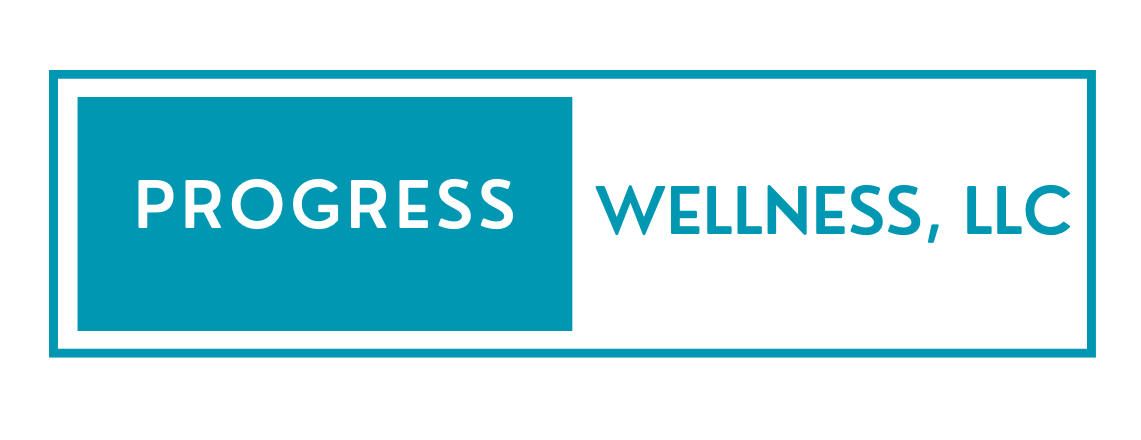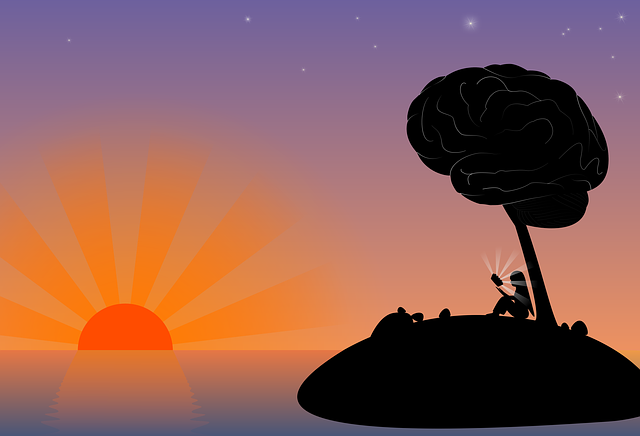As the summer comes to a close, some of us might be excited to move onto the next season, but some of us might be feeling sad or stressed about the upcoming transition. Changes in seasons can bring about lots of emotions for many different reasons. This is why I wanted to focus on mindfulness for the third and final lesson of the Progress Wellness summer series!
Mindfulness is a wonderful skill to practice because when we are feeling worried, stressed, or anxious (like some of us are when seasons change), being present can be difficult. But it can also be very helpful in those very same moments.
So what is mindfulness?
Mindfulness is the art of being in the present moment. It’s being aware of where we are and what we are doing, while observing our own thoughts, feelings, and physical sensations, all without reacting to them.
Yet mindfulness can sometimes feel like an abstract idea that’s impossible to attain. But just like any skill set, the more we practice, the better we become. Mindfulness can help reduce anxiety, stress, and depression—and there’s research to back that up! The more we practice mindfulness, the better we feel, and the more present we are.
There are many different ways to practice mindfulness. Often people think practicing mindfulness means they need to meditate, sit still, or close their eyes for a period of time. While some do enjoy practicing mindfulness in that way, there are plenty of other ways we can engage in mindfulness too. And the good news is that we can do most of these things for however long we want, whenever we want—even right now!
Below are some surprising ways people practice mindfulness:
Exercise (running, walking, lifting weights, yoga, etc.)
Cooking
Working on a puzzle
Gardening
Naming five things you can see, hear, and touch
Deep breathing exercises
Listening to a guided meditation (in person or digitally)
As you can see, mindfulness comes in many different packages. The idea is to find something that allows you to participate in the moment. For those who enjoy using cooking as a mindfulness strategy, they are fully engaged at that moment, focusing on the smells, tastes, and textures of the dish they are preparing. Or deep breathing exercises help people focus on their breath—each moment they take a deep breath in or out, their mind is present and focused on their body.
During your mindfulness practice, you might notice that your mind wanders off and you begin thinking about something else, maybe about your worries or anxieties. When that happens, just notice it and bring your attention back to the moment. It’s all a natural part of practicing the art of mindfulness.
If you would like to learn more about mindfulness, check out my YouTube channel! I cover this topic in more depth and also demonstrate a quick 30-second mindfulness strategy.
Thinking Your Way to Feeling Better
It’s a simple fact: Our thoughts affect our mood. And it’s easy to understand why.
Take this moment to notice your mood. How are you feeling? Now, take a moment and observe your thoughts. What are you thinking?
If you are feeling happy, your thoughts are most likely in the happy category. If you are feeling anxious or stressed, then your thoughts are most likely causing you to have anxious or stressed thoughts.
Thoughts affect our mood. When we think better thoughts, we feel better. Sounds easy, right? Well, it might take a few sentences to explain, but it’s actually hard work.
You can improve this in a number of ways, including therapies such as hypnotherapy, as well as simply making a change in how you think of yourself. It’s this which we are going to be looking at here in some detail.
Thinking our way to feeling better means we make a conscious decision to essentially change how we think about ourselves and the situations we are in. The deeper the negative roots are, the harder it can be to rip them out for good—but it can be done.
Here’s how to start.
Step 1: Track your mood and thoughts each day and write them down. Keep a journal or use your phone. The important thing is to collect your data.
How are you feeling and what are you telling yourself based on that emotion you are experiencing? Start making the connections.
Example: You’ve tracked your mood and observed your thoughts for a few days, and you notice that your dominant emotion is anxiety. Your thoughts are filled with “what if” thoughts:
“What if I can’t get this done on time and my boss fires me?”
“What if this actually does not work out the way I had hoped?”
“What if I make a mistake? I’m going to look stupid.”
“What if I don’t know how to do what’s asked of me, and people realize that I’m not as good as everyone thinks I am?”
I could go on and on with examples of anxious thoughts, but you get the idea. Anxiety creates doubt. If doubt gets in the room, it snowballs and attempts to take up our entire house.
Now that you have data on your emotions and the thoughts connected to those emotions, you can move on to the next step.
Step 2: As you track your thoughts and emotions about yourself or a situation, I want you to ask yourself:
“What would I tell my best friend if they were saying this to themselves? Would I say the exact same thing about them? Or would I offer a different perspective and probably be more kind?”
We are our own worst critics, so most often we wouldn’t dream of saying what we say to ourselves about ourselves to someone else. My guess is you would probably be more realistic and kind to your friend.
Example: Let’s say you think:
“What if I make a mistake? I’m going to look stupid.”
Now, in response, ask yourself this: “If my friend came to me saying that, would I tell that friend, ‘Yes, I hate to tell you this, but if you make a mistake that means you are stupid.’?” Seems pretty harsh and untrue. What might you say instead?
Maybe you’d tell them how making mistakes is how we learn. Or you could remind them that people make mistakes all the time and that in no way do those mistakes define who they are. Or you’d remind them that they’ve been in positions where they did not know something before, and they figured it out. This time is no different. You’d tell them: “You got this!”
Now that you have data and evidence that there is more than the first perspective, you are forced to see alternative ways of looking at your own anxious situation. Now give yourself the same responses you would give your friend. It might not feel as true as it does saying it to someone else, but you have to admit your first viewpoint is not the only answer.
Notice how different these two interpretations of the same situation can be. Notice how you feel taking the first approach compared to the second.
When we are able to create different perspectives, we give ourselves an opportunity to see different outcomes, to challenge assumptions, and to be more realistic and kind to ourselves. We are reality testing instead of allowing our negative mood to dictate what we think and believe.
That’s healthier and more productive. When we think better, we feel better. That’s a fact!
I encourage you to take this month to keep track of your moods and your thoughts, and to challenge any harsh thoughts with “What would I tell my best friend right now?” And then try to listen to those answers.
Consider your mind like a radio. Whenever you catch the strains of negative thoughts broadcasting through your mental speakers, make a conscious decision to switch to a more positive station. It will definitely require some effort at first. However, the more often you change the channel, the more automatic it becomes. This is why every reputable rehabilitation center emphasizes the importance of recognizing and combating negative thought patterns. It's a process, but one you're fully capable of mastering. With time and practice, this healthier, positive station will become your default setting!


